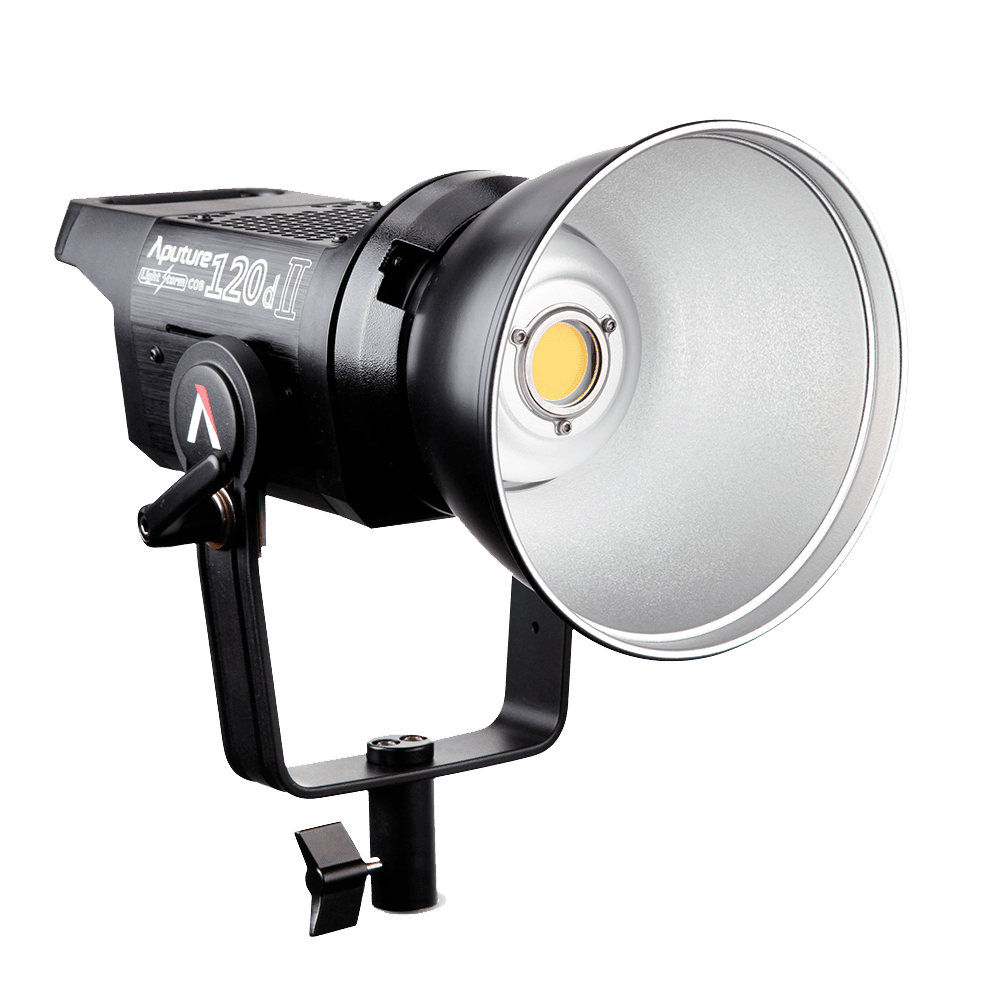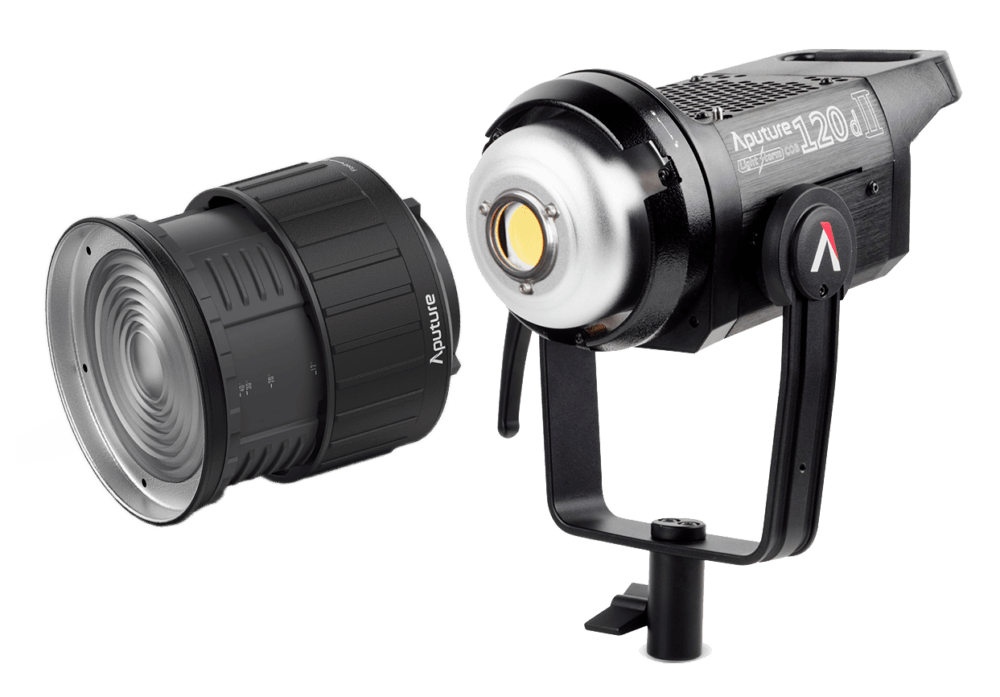LED100D MKIII vs Aputure 120D II
When it comes to Continuous studio lighting, many photographers/videographers are looking for a high-quality lighting option, but don’t want to have to spend obscene amounts of money whilst doing it. In this blog, we discuss two of the newest LED Lights available on the market, the PIXAPRO LED100D MKIII and the Aputure 120DII, to see which one suits best.
 |
 |
Left: LED100D MKIII
Right: Aputure 120DII
Both of these lights have a few things in common. They are both LED Lights that offer a brightness equivalent to that of 1000w tungsten, which offers a very powerful lighting for any shoot. Both lights can be controlled via Remote control, making it much easier for the user to adjust the lighting in a short period of time. The cooling system behind both of these lights is also similar, as they both have a built-in cooling room/sink as well as an updated cooling fan which won’t disturb your shoots, as it only measures up to a maximum volume of 18dB for each light. This fan is designed with constant use in mind, and with it being so quiet, these lights are the perfect set-up for Interview shooting as the sound they create will not affect the background noise. They both also come with Bowens S-Type fitting, which is the most common fitting on the market, allowing the user to find high quality and common modifiers without needing to spend too much money. Other than these particular similarities, the lights are quite different.
When it comes to quality of light, the specifications point in the favour of the LED100D MKIII. The LED100D MKIII offers a better colour temperature than the 120DII, with it being 5600K compared to 5500K, leading to more vibrant shots and a sharper quality end product. This is reflected in the slight difference the in CRI and TLCI too, as whilst they both offer the same TLCI of 97, the LED100D MKIII has a slightly better CRI of 97 compared to the 96 offered by the 120DII. Also, whilst they can both be used via a remote control, the LED100D MKIII comes with a digital LCD screen on the back, allowing the user to see what the light is doing at any particular time. This isn’t something available for the 120DII, as the user can only see what is happening with the light with the remote control or the control panel attached off-light. And if the user decides that they want something a little different, there is also the LED100B MKIII, which is the Bi-colour version of the light, offering both daylight and tungsten lighting. The LED100B MKIII differs from usual Bi-Colour lighting, as it offer the full 100w for both Daylight and Bi-colour, whereas standard Bi-Colour lights would split the Power Output to 50W each.We have tested the brightness of each of these lights, and at 1m with the Standard Reflector attached, the brightness of the LED100B MKIII measures at approximately 11,000 lux whereas the Aputure 120DII measures approximately 7,900 lux.

But the 120DII does come with some advantages of its own. The 120DII has the ability to adjust its power in a slightly wider range than the LED100D MKIII, as it can go from 100% all the way down to 1%, whereas the LED100D MKIII can only achieve 100% - 10% power. The Aputure 120DII also has a slightly higher power output compared to the LED100D MKIII, as with 140Ws compared to 100Ws respectively. This size of the 120DII is also slightly less than the LED100D MKIII. When looking at the head unit on its own, The LED100B MKIII is 20cm (W) x 13cm (H) x 30cm (L) and the 120DII is 19.3xm (W) x 12.4cm (H) x 30cm (L). So even though the lights themselves are the same length, the 120DII is slightly smaller overall.
This is further reflected in the weight of the two head units, as the LED100D MKIII weighs approximately 2.2KG and the 120DII weighs approximately 2.1KG. But when you look into the overall weight, the LED100B MKIII works out better. When running on main power, the LED100B MKIII weight approximately 2.9KG, but with the added control panel for the Aputure 120D, this brings the weight up to approximately 4.2KG.
Also, when looking at running the light of V-Mount Battery, the weight is also lighter for the LED100B MKIII. With the V-Mount Battery plate attached, the LED100B MKIII weighs approximately 2.5KG but the Aputure 120D weighs approximately 3.7KG. So whilst the head unit is lighter, the Aputure 120D does actually weigh more overall.

The LED100D MKIII does come with a few extra perks compared to the 120DII. The LED100D MKIII comes with a 2 Year UK Based warranty, meaning that if for any reason something was to happen to the light during this period, the user would be able to contact PIXAPRO and they would be able to assist with the queries and problems the user may have.
Another bonus to the LED100D MKIII would be the price. For the 120DII, the customer is looking around £650-750, but for the LED100D MKIII, this is available for £329.99. For these prices, the Aputure 120D does come with the remote control and V-Mount battery plate separately, whereas this is only for the LED100B MKIII light. If you wish to add the remote control and the V-Mount battery plate, these can be added as extras for a discounted price.
This then takes the total up to £399.98, which is still noticeably cheaper that the Aputure 120D. This huge price difference could make a massive difference to the average customer, as the extra money could be used to purchase any modifiers or additional equipment that the user may find necessary.
Whilst both of these lights would be a wonderful addition to any photographers/videographers set up, the extra light sharpness as well as the large difference in price means that, in this case, the LED100D MKIII would be the light we would recommend.
.png)































































































































































































































































